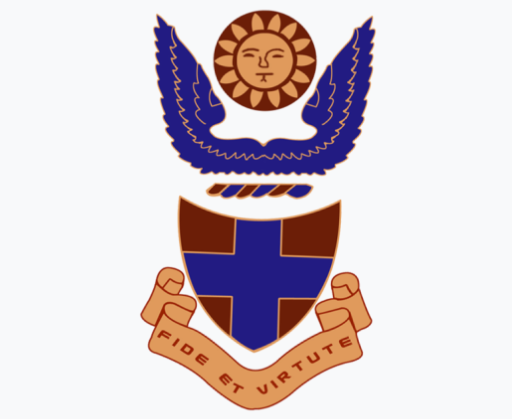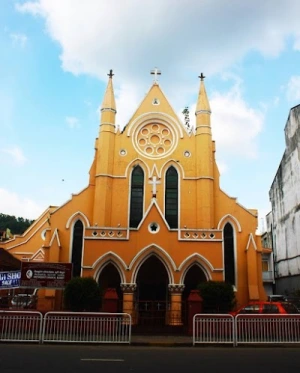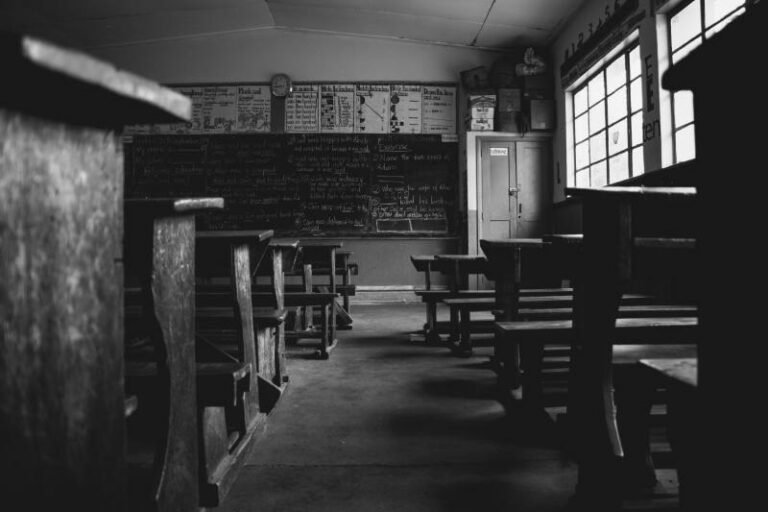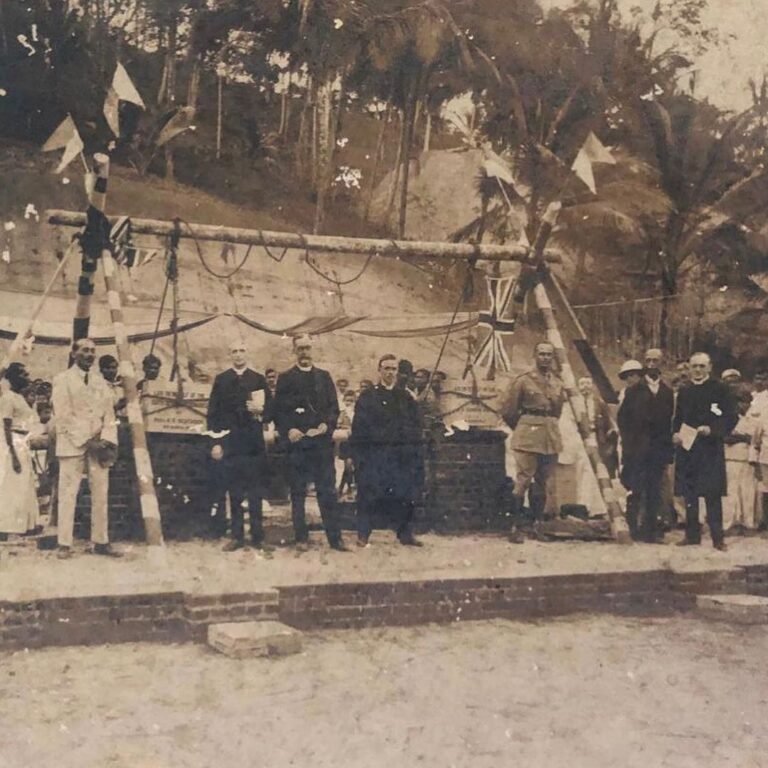Brownrigg Street Days
The following excerpts are from the preliminary chapter (“A General Survey – The Spencer Period”) of Louis Edmund Blaze’s KFE: The Story of Kingswood Kandy (pp. 14-23), which documents the author’s reflections of Kingswood’s first twenty five years.
Mr. Ernest Handscombe Spencer was the son of English parents holding a high social position in the rather exclusive military cantonment in Jullundur in the Punjab. He was educated first at the Bishop Cotton’s School, Simla, and came with two brothers, in January 1885, to the Anglican Boys’ High School, Lahore, where I had just taken up duties as Second Master…
… In August 1897, we in the Kandy School were in a very difficult position. We were losing two of our Teachers and a Senior Master was urgently needed…

… In this dilemma I wrote to Mr. Spencer, who was at the time an Assistant Master in the Anglican School at Agra, asking if he could see his way to joining us. With characteristic chivalry – it could be nothing else – he readily consented, and arrived here on the 21st September 1897. He took to the boys, and the boys took to him. He had a winning personality and a gift of anecdote. He would hold groups of boys entranced with stories of adventurous life in India, or with more modern tales of chivalry and romance. He would read, or impressively recite, night after night, to our half-a-dozen boarders such poems of action as “The Fight”, or “The Revenge”, or the “Ballad of East and West”. He would teach the boys to sing new hymns and songs… Local concerts and a number of other activities outside the School found in him a skillful organizer and manager. Evening after evening he would go down with the boys to the Bogambora Green or the Barrack Square to play football or cricket with them. It was he who organized and carefully supervised the School annual sports, and the first Challenge Cup was presented by himself. He was lavishly generous in his gifts…
… The rooms in Pavilion Street had now become too small for our increasing numbers, and Mr. Prince tried to find suitable premises for what might be a “permanent” home for the School. A house in Brownrigg Street was eventually secured “at a cost of Rs. 10,000 the purchase money being found by the District, and the School paying interest thereon”. In front were the military Officers’ Quarters, and the traffic on the street was not noticeably large. The house was one of two built some fifty years before by Mr. William Staples, advocate, and it was once occupied by Messers. George Wall & Co. as their business office. In 1897 it was occupied by Messers. Pate & Son. A few of the most necessary alterations were made, and the School began its new term there on Wednesday, the 12th January 1898. The Principal and his family lived in a portion of the house.

What we required most urgently was an Assembly Hall and a Dormitory for boarders. A loan, collecting cards, a Cantata (“A Daughter of Moab”) got up by Miss Eaton all went in aid of the Building Fund. The Easter holidays saw the building in progress, and on Monday, the 27th June 1898, the Hall, though still incomplete, was formally declared open. There was no public ceremony. The School assembled in the usual way, and there came also Mr. and Mrs. Prince, Mr. and Mrs. J.H. Eaton, Miss Eaton, Mr. J.B. Blaze, Mr. W.D. Gibbon, Mr. A.M van der Straaten, and Miss Lawrence, the very popular Principal of the Girls’ High School…
… Much money was still needed. A Fancy Bazaar was held in the Hall on Saturday, 12th November 1898 in which an amusing feature as the “Art Gallery” of deceptive “pictures” for which Mr. Spencer, P.W. van Langenberg, and Tom Marshall were responsible. A couple of lectures given later were helpful: Mr. F.J. Wayman, Editor of the “Ceylon Standard”, on “Public Opinion – its Development and Results”; and Mr. H.W. Cave on “The Ruined Cities of Ceylon”
It was at this time that the School Committee decided on a distinctive name for the Boys’ High School, and on Mr. Prince’s suggestion the name at length adopted was Kingswood, after John Wesley’s well-known school. A name of our own with local associations was greatly to be preferred, but matters were rushed through in order that an announcement might be made at the opening of the Hall. The simpler terms School and Head Master, which had hitherto been used, gave way to College and Principal.
Mr. Prince left Kandy in March 1899 with a record of useful work done at a crucial stage in our history. He was succeeded by the Rev. W.H. Rigby as Manager, and the Rev. P.R. Willenberg again as Secretary of the Committee. Some notable additions were made to our staff. Mr. C.J. Olivier, a graduate of the Madras University, took charge of our Senior Mathematics, and then of other classes also. Robert De Alwis taught for five years, and his literary gifts found scope in the School Magazine where he gave us interesting articles on Sinhalese folklore. Mr. E.F.C. Ludowyk’s three years were a great help with his stormy energy and practical wisdom…
… A grant from the Wesleyan Missionary Society in London enabled Mr. Rigby to put up the small Dormitory, which was opened in January 1901, and soon tenanted. Mr. R.F. Crowther planned the Dormitory and supervised the building of it without any charge to the School. He was warmly attached to the School and took a keen interest in it, an interest which ceased only with his death in England in 19–…

… An experiment, quite new to Ceylon, was made in January 1902, when Miss Annie Bartholomeusz was appointed to the charge of Standards 1 and 2. Today, lady-teachers are found in nearly all boys’ schools and their work is not limited to the lower standards; but the formal appointment we made to our regular Staff in 1902 evoked much comment and some unfavourable criticism. Miss Bartholomuesz continued with us for nearly seven years, and was of the highest character…
… Another experiment was made at this time by Mr. Burrows, which affected other schools as well, in the formation of the Cadet Battalion of the Ceylon Light Infantry. Mr. Burrows did much for Education in Ceylon…

… Mr. J. Harward, who became Director in 1903, took as great an interest in us as was shewn by his predecessor. He was always ready to give us helpful advice and guidance. He presided at our prize-giving the next year, the year in which the Kingswood Union of Old Boys and Teachers was founded. A bold step was taken by Mr. Harward in 1905 when he arranged for Drawing Classes to be held in Kandy. It was only fair that some of the educational advantages enjoyed by Colombo students should be extended to others and a weekly class was started in Kandy and held at Kingswood, under the direction of Mr. A. Bartlam, of the Technical College. The first of these classes met on Wednesday morning, the 17th May 1905, with 27 teachers from various Kandy schools. School children began to attend from June, and the classes continued to be held for two years…

… Mr. (now Rev.) A.G. Fraser’s arrival in Ceylon in November 1904 resulted in a closer and friendlier association with Trinity College. Are not his doings worthily recorded in Miss V. Reimann’s “History of Trinity College” (1922)? He received a tumultuous welcome when he sang a “topical” song at a Concert of ours in June 1905, and introduced two verses in which his sympathy and friendliness found expression.
At the end of 1906 Mr. Spencer left us to return to India. He came back five years afterwards, in May 1911 and worked with us for a few months. But his health failed, and on the 25th September his loyal spirit passed away. His name will be held in grateful memory by all who knew him, and will be perpetually honoured, we trust, in the School he loved so dearly and served so devotedly.
KFE: The Story of Kingswood Kandy was originally published in 1934. This excerpt was taken from the book’s current edition in use, published in 1994.








